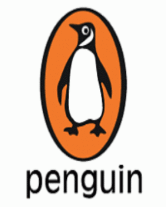Grossology, the green book, is a physiology and health science book. It discusses various functions of the human body, which include the digestive, excretory, immune, and integumentary systems. Of course, the systems are disguised. The digestive system becomes barf, saliva, burps, bad breath, and tooth tartar. The excretory system consists of poop, diarrhea, pee, and farts. The immune system takes the guise of scabs and blisters. The integumentary system is made up of zits and dandruff. Many of the sections include laboratory exercises that enhance the information.
Animal Grossology, the pink book, is basically zoology and natural science. Different types of animals are explored based on their extreme characteristics, such as eating blood or producing slime. Some of the species discussed in Animal Grossology include sea stars, owls, ticks, lice, slime molds, tapeworms, and dung beetles. Like Grossology, Animal Grossology contains activities that can be done in the classroom.
Grossology Begins at Home, the orange book, is an integrated science book. It takes children through a typical day in the life of one child. That typical day, however, focuses on the gross aspects of one's home, which contains animal science, health science, and microbiology. The micro-world that surrounds our daily lives introduces bacteria to students in an approach that they will remember, such as how bacteria cause food to rot and how bacteria are ever-present life forms in our kitchens. Easy activities are scattered throughout Grossology Begins at Home.
Each of the books in the Grossology series can be used separately. Information is not cumulative from one book to the next. New information is presented in each book, so there is no overlap of topics or experiments.
What about parents or the administration?
Parental disapproval has not been a problem for teachers using Grossology books in the classroom. Kids become so excited about learning the information that they often share their newly acquired knowledge at home. When the parents see how thrilled their children are to learn about science, buy-in is not a problem. Actually, the larger problem has been parents allowing children to bring their Grossology books to school without permission from the teacher. Sylvia has received several reports from parents about teachers who have asked students to put away their Grossology books because the students became so enthralled in the books that no other learning was taking place.
It is a great idea to check with your administration before using Grossology in the classroom. In some cases, principals have requested that teachers refrain from discussing certain sections, such as those on farts or boogers. However, most teachers have not reported any restrictions on the use of Grossology in the classroom. Grossology has gained a reputation as a respected, although wacky, science book. With the acceptance of the Grossology series as legitimate science books, hesitation on the part of administrations has lifted.
CLASSROOM EXPERIMENTSBelch Model
You will need:
vinegar, baking soda, medium or large balloon, funnel
What to do:
If you do this over a sink, there is much less cleanup at the end. The balloon is your stomach. Pour a small amount of vinegar into the bottom of the balloon. Use the funnel to add baking soda to the balloon stomach. Pinch the balloon closed at the neck with your fingers; this is your esophagus. Watch your balloon stomach expand with gas. Unpinch the esophagus to release gas, or a burp. Practice the pinch release to see if you can make the belch model sound like a real burp.
Owl Pellets
You will need:
an owl pellet (you can collect pellets yourself or you can purchase owl pellet kits at some educational toy stores), sheet of white paper, tweezers, skewer or long needle, glue
What to do:
Place the pellet on the sheet of paper. Use the tweezers and skewer to tease the fur away from the bones. Collect the bones in a pile. Sort the bones into skulls, backbones, legs, etc. Figure out how many different kinds of animals' bones were in the pellet. Choose the bones that you think belong to one animal. Piece the bones to form a skeleton. Glue the skeleton together or glue it onto cardboard. Throw away the fur and other animal parts that you don't use.
Toilet Paper Testing
You will need:
several brands of toilet paper, water, eyedropper, a dozen large nuts or bolts
What to do:
To test for absorbency: From each brand of toilet paper, remove three squares. For each brand, fold the squares along the perforations to make one square. You should now have one square that is three layers thick. Use the eyedropper to place one drop of water on each of the brands. Check the bottom layer of each brand to see if the water leaked through. Add water drop by drop to each brand until one leaks. The first one to leak is the least absorbent. The one that holds the most drops before leaking is the most absorbent.
To test for strength: Remove one square from each brand. Wet the center of each square. Place one nut or bolt on each square. Lift. Do any of the brands rip? Add nuts or bolts until one of the brands rips when it is lifted. The brand to rip first is the least strong. The one to rip last is the strongest.












